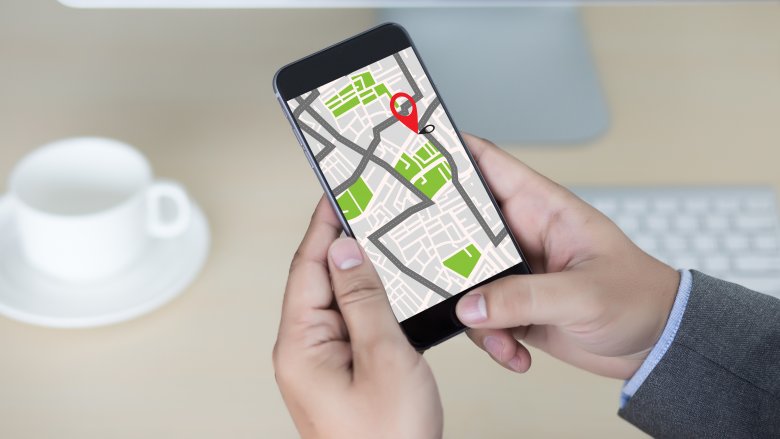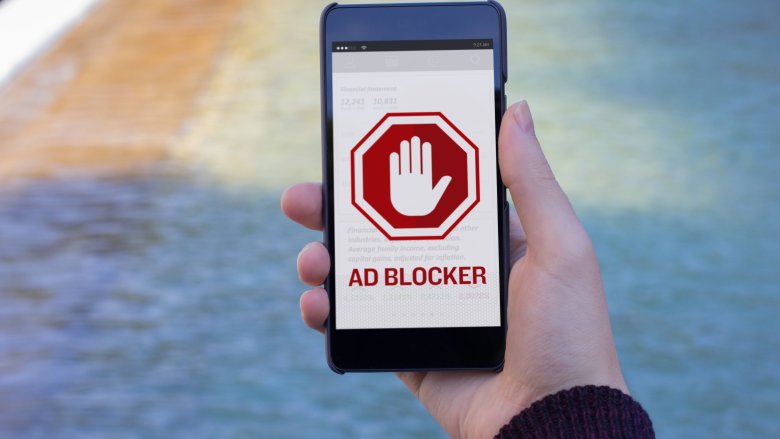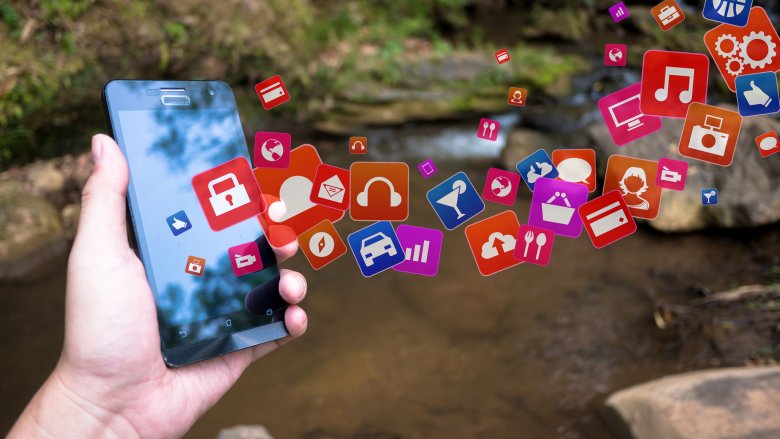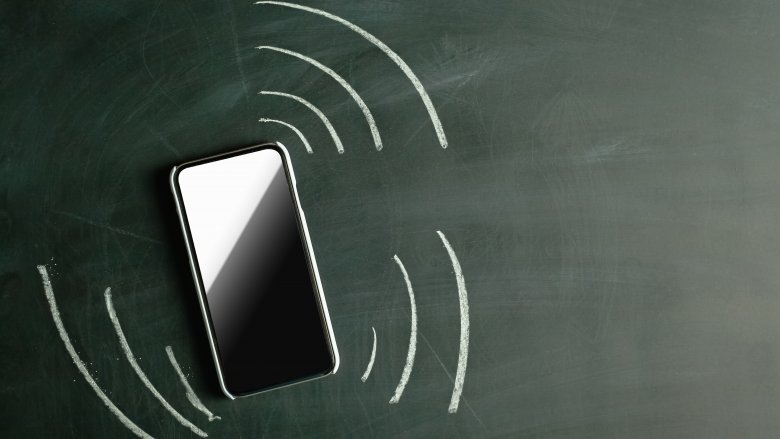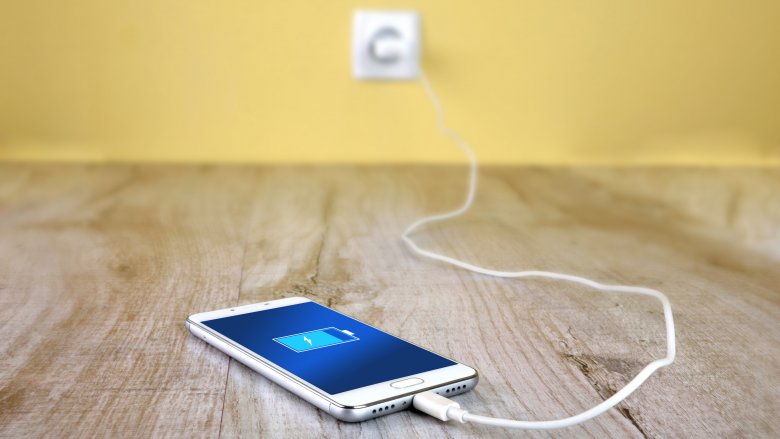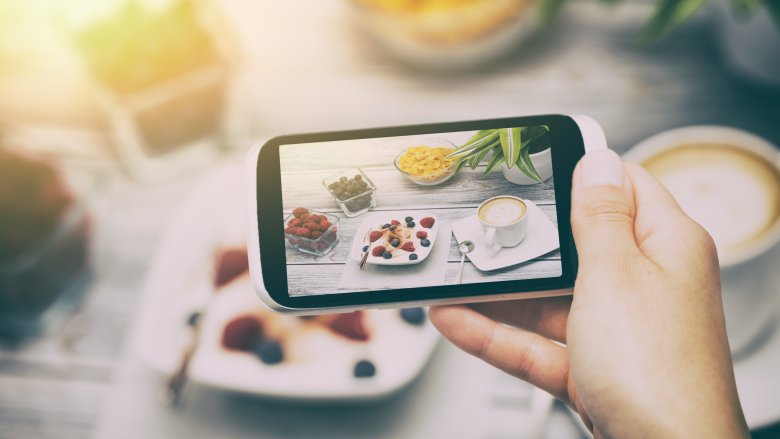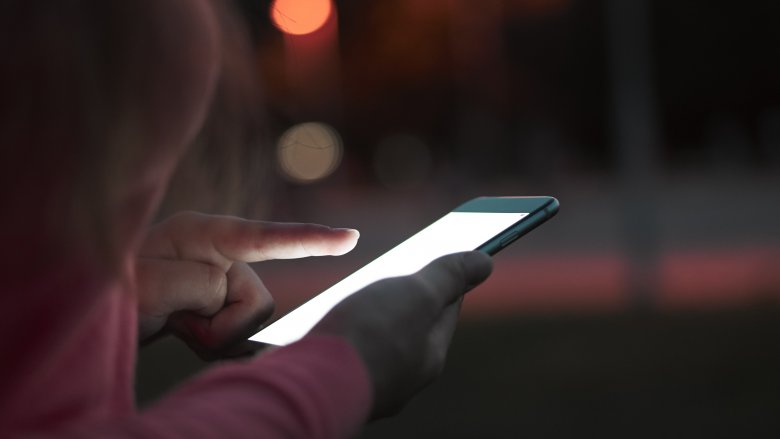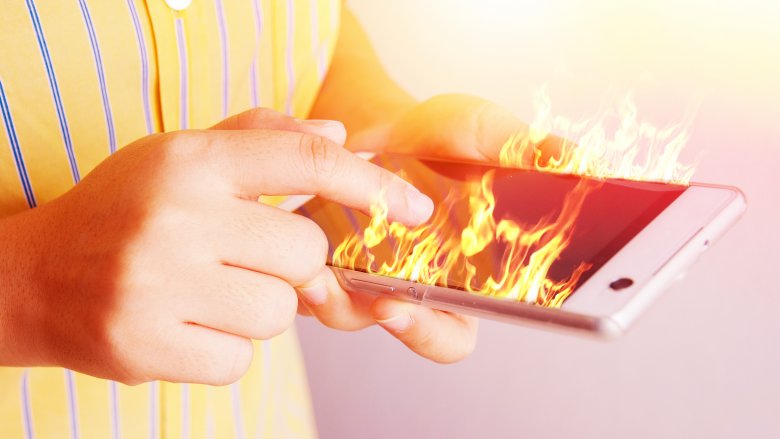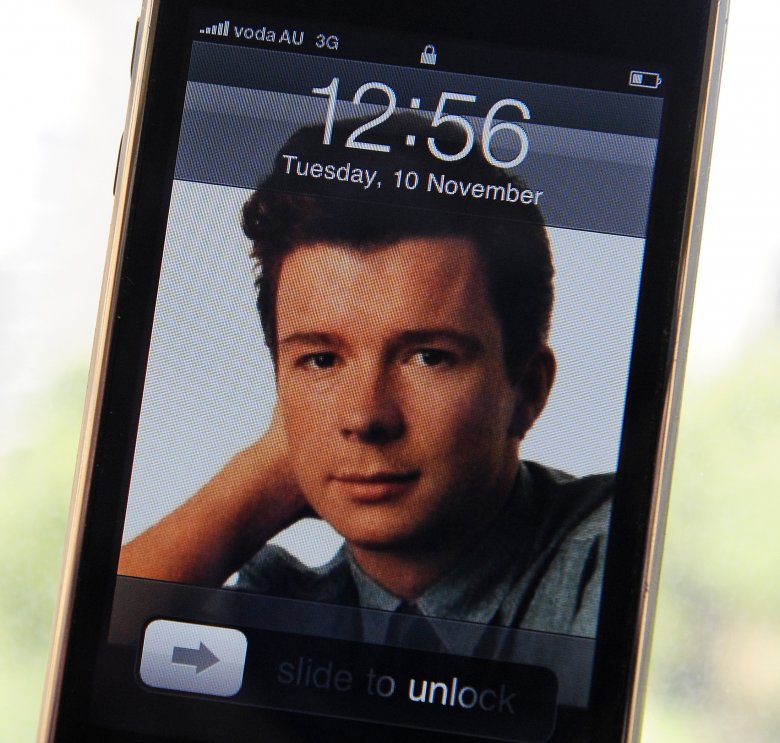Things That Are Killing Your Phone Battery
Chances are, your phone has become something of an extension of yourself. You might even be reading this on your phone right now, and in that case, we don't want to know what else you might be doing. Regardless of how much you use it, even the best batteries don't seem like they last nearly long enough, and you might find yourself charging it more than once during the day. What's going on here? It's not just those games you secretly play at work — it's a lot more complicated than you might think.
GPS
If you're one of those people that doesn't bother with an actual, independent GPS anymore because you have one on your phone: congrats, you're one of us. Unfortunately, what you're getting in convenience, you're paying for in other ways. You can probably watch your battery die as you're navigating, probably with fingers crossed, hoping you can get where you're going because your car charger can't keep up.
There's some pretty cool science behind why a GPS is such a battery hog, and it has to do with how much it has to work. Since GPS relies on a series of very fast updates to your coordinates, that means your phone has to keep its communication channels open all the time. More than that, it's not just communicating with a single cell tower. Instead, it's communicating with three or four satellites, using all that information to triangulate exactly where you are.
According to Google engineer Robert Love, the worst of the GPS function's battery drain comes in large part because the continuous operation of the app keeps the phone from going into Sleep Mode. Most smartphones rely on that to conserve most of their battery power, and that's just not happening when you have your GPS on. If you use it a lot, do your phone a favor — get a real GPS.
Internet ads
Games kill your phone's battery life, everyone's so familiar about that, we're not even going to talk about it. (Your Candy Crush secret is safe with us.) Candy-matching magic aside, do you know what else all those free games have that are causing your battery to wave the white flag? Pop-up ads.
It's not just the ads that show up on the screen of free games that are a big power drain here — it's the ads that show up in regular web-surfing activities, too. Estimates are all over the place, based on what kind of phone is being used, but on the low side, running a web browser with no ad blocker can double the amount of battery you can expect to use. It only goes up from there, and some tests show that downloading all those fancy, flashing, in-your-face ads takes more battery power than whatever it is you actually want to look at in the first place.
It's not entirely surprising, either. Internet ads are meant to be eye-catching (and annoying), and that means they're usually bright, animated and ... well, we keep coming back to annoying, so we'll just say it. They're annoying. That distracting animation all takes battery power, and that's going to hurt your phone's lifespan in the end, along with your patience. How annoying.
Closing all your apps
This one seems a bit problematic, like it goes against everything that is good and orderly in this world. We blame Dad — you know, the person that always complained about having too many lights on, because you were wasting electricity? That guy. If you want to save electricity, you turn off the lights. You learned that early on, so you probably think the same thing about your phone. If you want to save power, you turn off all those power-sucking apps. It makes sense, and it's also completely wrong.
That's because, when an app is running, it's only using a relatively small amount of battery power. The drain comes when you first turn it on from completely closed. Then, the app needs to be first put into the phone's RAM, and then go through the complete load. That's not just more work for your battery — it's more work for your processor, too. If you leave apps you use all the time just sleeping in the background, you're not going to be making your phone go through all that unnecessary work (for the tenth time in 24 hours — seriously, no one's Facebook posts can be that important).
It's also worth noting that your phone is smarter than you are. If you think you're closing apps to free up memory, you're not doing anything most smartphones do on their own anyway. They're already way ahead of you, and please, don't ask us to explain that one to Dad.
Vibrate
Vibrate is an amazing luxury that allows us to have a llama-based ringtone while still maintaining some sort of dignity in public. But the thrill of having ringtones that are only funny at the end of the night at a seedy bar comes with a price, and leaving your phone on vibrate most of the time is a huge drain on the battery. (At least, if anyone calls you. And with a ringtone like that? We'd be shocked.)
Vibrate is a massive power drain because, for all your phone's amazing technology, this is one function that's surprisingly old-school. In case you've never taken a phone apart (on purpose or accidentally), you might not know that the vibrate function actually comes from a tiny little motor inside your phone. Instead of ringing, the little motor spins. It's off-center in your phone, and have you ever had a washing machine get unbalanced and start making all kinds of noise? It's the same principle, but it doesn't happen without a substantial power surge to kick-start the motor for the split-second your phone vibrates.
It takes a lot more power than just making a noise, and if you're like most people, you never answer on that first vibrate. That means your phone is putting out a whole series of incredibly draining power surges, and over the course of the day, that can make a serious dent in your charge.
You're charging them wrong
Think back to when you got your very first cell phone. You probably heard something about letting the battery run all the way down before charging it back up to 100 percent, and you probably still do something of the sort. We get it — we're creatures of habit, after all, and we don't like to think that we're wrong.
Well, that's wrong. First, let's look at what's actually going on when we put a phone on the charger. When we first plug it in, we start what's actually the first stage of charging. Constant current charging is, as the name suggests, a constant flow of what we'll call battery juice, back into your phone until it's at about 70 percent. After that, your charger changes over to something called constant voltage charging. For this remaining 30 percent, the charger balances the voltage that's going into the phone with what's already there ... so as the battery fills, the current slows down. By the time it's at 100 percent, the only charge that's going into the phone is a tiny trickle that's the same percentage as whatever the battery is losing.
That means a couple of things, and one of the big things is that you can't overcharge your phone. It also means that you don't have to worry about overloading your battery. That's good, because it's been found that little trickle of battery juice is actually better for your battery than a 0 to 100 percent recharge. How much battery power you use between charges actually has a name: depth of discharge. Modern smartphone batteries don't like big DoDs, and you're much better off throwing your phone on the charger a few times a day to top off the charge, instead of letting it run out completely.
In fact, regularly doing a 100 percent DoD can degrade your battery up to 70 percent in just 300 charge cycles (the average lifespan is between 500 and 1,500 charges). If you average a 25 percent DoD (charge it when you hit 75 percent battery left, in other words), that same battery can live through 2,500 charges without any noticeable change in battery power. Not too shabby, no?
If you're like the rest of the world, you have Facebook on your phone. But it's also highly likely that it's why your phone is reaching the end of its battery life long before you're even out of work for the day.
Exact numbers vary quite a bit, based on what phone you're using, your operating system, and all sorts of other variables. But there's no denying that no matter what your phone is, Facebook is killing it. The Guardian found that uninstalling the Facebook app from an Android increased battery life by about 20 percent, and getting rid of both Facebook and FB Messenger increased the load times of other apps by about 15 percent.
In part, that's because Facebook runs constantly. Push it to the background? Still running. Close the darn thing? Yep, you guessed it—it's still running.
If you actually read the fine print, instead of skipping over because you assumed you knew what I said, you'll know Facebook's tiny-type is a bit hairy. Facebook does a whole lot of things in the background that sucks your battery dry, like constantly updating your location, refreshing, and pushing through what could become an unmanageable number of notifications. Every time one of those notifications goes through, it wakes up your phone, lights up the screen, and uses battery power.
Your phone's an extension of you, right? Think of it like you. You're trying to take a nice, well-deserved nap, when someone keeps posting "20 Things You Didn't Know About Me!" questionnaires and tagging you in them. You don't appreciate it, right? Your nap certainly isn't going to benefit from it. Neither does your phone.
There's two different perspectives on Instagram. Either it's an awesome way to share everything about your life, or it's a tool for oversharing that's going to lead to the downfall of society (and those kids better get off our dang lawn, while they're at it). What's undeniable, though, is that having it on your phone is going to make your battery as tired as Grandpa after a good bout of lawn-yellin'.
Part of the problem comes from Instagram's constant catering to your demand to see just what everyone else is doing (and, let's face it — the pit of self-loathing it causes isn't helping your mental batteries, either). The obviously photo-heavy app is already a power and data hog, and matters aren't helped by its panicked attempts at pre-loading photos before you try to scroll through them.
And when it's pre-loading videos, assuming you really want to see your frenemy's latest post from her Hawaiian vacation, it's even worse on data and your battery. For your own sanity, at least take a look at some of Instagram's settings, and see if you can make it at least a little less of a love-hate app. That we can help you with, but your frenemy? All yours.
Your blindingly bright screen
We all know That Guy: the one that turns the brightness on his screen up to 100 percent, because there's people in low orbit around the Earth that want to read his email, too. He's the opposite of the secretive ninja who turns their brightness all the way down, probably because she doesn't want anyone to know she's not doing anything work-related at all, but is opening Clash of Clans for the tenth time today. Guess who's being kinder to their battery?
If you think it might be the person that's being kinder to everyone around them, you're absolutely right. Figuring out just how much of a difference lowering your brightness setting really makes means using a lot of mathematical equations with Greek letters, so needless to say, we're going to give that one a pass. But we can tell you that Wired found the difference in battery life at full screen brightness was massive, with their iPhone 4 lasting 6.5 hours at ninja brightness, and only 3.5 hours at scald-your-eyeballs brightness. While that's just to illustrate the difference screen brightness makes, that's a huge difference.
They even found that, if you turn the screen brightness down, do some fiddling with a few other settings, and stop checking your phone every five minutes to see who just liked your latest Facebook selfie, you can make your phone last up to 18 hours. Tell that to your SO the next time they insist on mucking about with their phone while you're trying to watch TV.
Heat
Spend too much time doing pretty much anything on your phone, and you'll find that it's starting to get uncomfortably warm. That's a consequence of using too much too often, and whether or not it's a problem is a topic for something else entirely. Aside from potentially doing damage to your phone itself, that heat can also do unspeakable things to your battery life, too. It doesn't matter if you're talking on it or if you were just careless enough to leave it baking on the hood of your car (you heathen) — heat is heat and it's going to hurt your battery.
Smartphones use lithium-ion (or Li-ion) batteries, and for the sake of everything we're talking about, you should know a couple basic things. One is that what makes them special is that the flow of molecules goes in two different directions, and that allows for recharging. The second is that they slowly degrade over time, and that's probably made you say, "Duh." Listen up, we're not done.
Every time you recharge your battery, you're generating a huge amount of heat. That's a big deal, because every time the internal temperature of your phone climbs 10 degrees Celsius, the speed of your battery's chemical reaction doubles. That means it's shortening your battery life and the amount of charge it can hold, starting your battery on its ever-so-slow death and decay. It ends up being something of a vicious cycle: battery life decreases, you charge it more, which generates more heat, and your battery life gets even shorter. Say you're keeping your phone at an average internal temperature of 104 degrees Fahrenheit, and an average of 40 percent charged. You're going to lose about 15 percent of your battery's capacity in 12 months, and if you rely on it all the time, that's a massive decline.
So, what can you do? Keep your phone's vents clean, and keep it away from external heat sources. If you live in Arizona, that just means you're going to have to do what any sane person would do, and move somewhere bearable. For your phone's sake.
A brightly colored wallpaper and theme
It's sharing time, so tell us about your phone's wallpaper and theme. We're going to assume you said that it was something that includes some bright blue sky, a field of daisies, and a matching theme. Life's depressing, but who says your phone should be? For full disclosure, we'll share that ours is a spiffy dark space theme. Guess who's more battery-conscious?
To be more precise, we're going to have to know just what kind of screen your phone has. If you have a newer phone, chances are you might have an OLED screen, which is the short way of saying your phone uses Organic Light Emitting Diode technology. Where older phones were backlit with a light that was the same no matter what color it was, OLED phones rely on individual diodes to light up the screen. The brighter the color, the more power they're using and the bigger drain on your battery it is.
BBC science presenter Steve Mould found that a white pixel uses 5.8 times as much power as a black pixel, and when you spread that out over your whole phone screen, that makes a huge difference. After doing some science-and-math stuff (that we're still not keen on — our brain goes off to play by itself when we see equations), he found that even factoring in other variables, changing your phone's theme and wallpaper to a manageably dark one can save about 18 percent of your battery power. That's not a bad deal, especially when you consider how many extra rounds of Mahjong that is. Speaking of, our lives have refilled.

